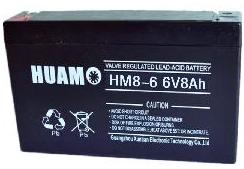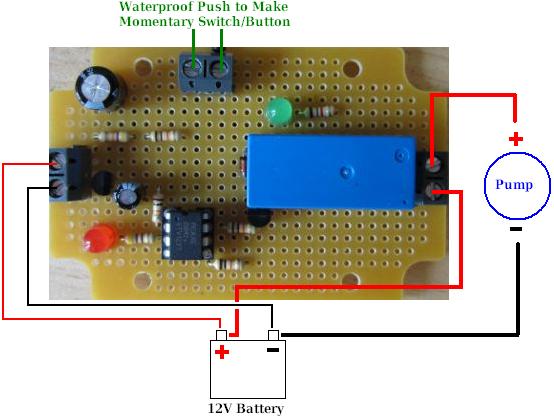Today’s project was a very particular low voltage disconnect for a powered snorkel system for recreational divers. The diver’s face mask is connected to a 5 metre long hose which is in turn connected to a buoy floating on the surface. A 12V battery powered diaphragm pump forces air from the surface down to the diver to breathe. Using such a system as opposed to scuba has the benefit of requiring no certification, gives a safe fixed maximum diving depth, and is lightweight and non-polluting.
The system is powered by two series-connected 6V 8Ah AGM batteries (a type of deep cycle battery which is sealed and can be used inverted) and gives 1 hour of dive time before needing to be recharged. The problem is how to let the diver know that the battery is low and protect the batteries from being overly discharged.
A piezo type warning buzzer could not be used since in a group of divers underwater it would be very difficult to ascertain whose buzzer was sounding, and a warning light would not work since this system would be used in tropical waters in bright daylight at shallow depths.
A generic low voltage disconnect could also not be used since it would just cut off the pump and therefore the air to the diver with no warning when the battery voltage breeched the set low voltage level. Instead something was required which would over the course of a few minutes cycle the pump on and off to reduce the air pressure to the diver forcing them up to the surface. (The system is an open circuit with a rebreather bag, and so turning the pump on and off reduces the pressure of the air supplied, but does not result in there being sufficient air one second, and then no air at all the next.)
There are commercial PWM (pulse width modulation) solutions available, but they are very expensive and could not give the exact shut down sequence desired – bringing the air pressure down to 90%, 80%, 70%, 60%…and so on over three minutes when the battery voltage gets low.
Therefore we made the special low voltage disconnect controller pictured above. This device constantly monitors the battery voltage, and when it falls and remains below a set threshold (11.2 Volts) the shut down sequence begins.
For 20 seconds the pump is off for 1 second then on for 9 seconds, off for 1s then on for 9s. Then for the next 20 seconds the pump is off for 2 seconds on for 8 seconds, off for 2s on for 8s. This process is repeated every 20 seconds increasing the pump off time and therefore reducing the air pressure to the diver so they have to surface, but can do so safely and without panicking.

